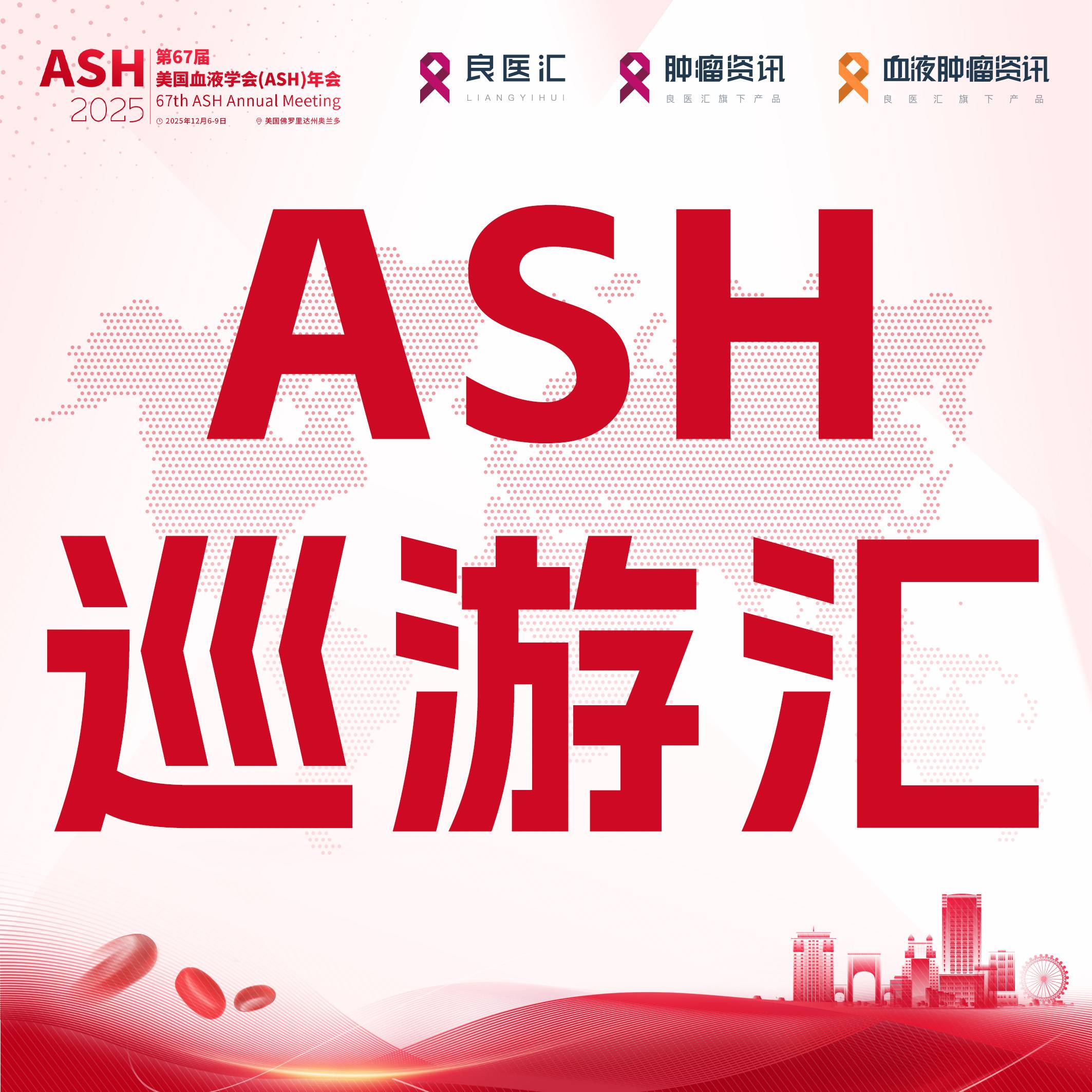
以下内容原文发布于AACR官方博客《Cancer Research Catalyst》,中文内容仅做参考,请点击文末“阅读原文”,阅览原为内容。
夏末已至,请阅览AACR 期刊编辑从8月刊中精心挑选的文章。本期亮点包括:软组织肉瘤的化疗联合方案、内脏脂肪组织对癌症发展影响的研究、支气管肺泡灌洗液用于肺癌基因组分析等。部分精选文章可限时免费在线阅览全文。
Journal: Cancer Immunology Research
Adoptive Cellular Therapy with Autologous Tumor-Infiltrating Lymphocytes and T-cell Receptor–Engineered T Cells Targeting Common p53 Neoantigens in Human Solid Tumors
While adoptive cellular therapy (ACT) has led to durable responses in some patients, its highly individualized design requires a longer wait time than most other cancer treatments. Researchers are interested in generating readily available “off-the-shelf” ACT that targets common tumor antigens, such as mutations in the p53 tumor suppressor. In this study, researchers sequenced tumors from patients with metastatic solid cancers to detect p53 mutations and identify tumor-infiltrating lymphocytes (TILs) that would recognize and react to p53 tumor antigens. They used their findings to generate a library of 39 T-cell receptors targeting p53 mutations that were shared across 7.3 percent of patients and that recognized tumor cells bearing p53 mutations in in vitro and in vivo models. Among 12 patients who were treated with expanded p53-reactive TILs, two had partial responses. In a separate experiment, a patient with breast cancer was treated with ACT made up of autologous peripheral blood lymphocytes engineered to express a T-cell receptor specific for a p53 mutant. This approach led to enhanced immune responses and prolonged persistence compared with the TIL expansion approach, as well as tumor regression that lasted for six months. The authors suggest that the p53-reactive T-cell receptors identified in this study should be further evaluated as potential treatment for patients with advanced cancers. A related commentary can be found here.
Journal: Cancer Epidemiology, Biomarkers, & Prevention
Association of Abdominal Visceral Adiposity and Total Fat Mass with Cancer Incidence and Mortality in White and Black Adults
Obesity increases the risk for several cancers. Visceral adipose tissue (VAT) is a hormonally active component of fat, and its accumulation at the abdomen is associated with metabolic dysfunction, cardiometabolic disease, and premature mortality. However, its impact on cancer development is not known. Here, researchers examined the association of abdominal VAT, as well as total fat mass, with cancer incidence and mortality among white and Black individuals. The study included 3,017 white adults and 1,347 Black adults whose abdominal VAT and total fat mass were measured by imaging between the years 1995 and 2016. Subjects were followed through 2017 for diagnosis of invasive cancer or cancer-related death. The authors found that both VAT and total fat mass significantly increased cancer incidence and that VAT significantly increased the risk of cancer mortality after adjustment for various factors. The observed impacts of VAT and total fat mass were not dependent on sex or race. This article was highlighted in the August issue.
Journal: Molecular Cancer Therapeutics
Discovery and Characterization of a Novel Aryl Hydrocarbon Receptor Inhibitor, IK-175, and its Inhibitory Activity on Tumor Immune Suppression
Aryl hydrocarbon receptor (AHR) is a ligand-activated transcription factor that regulates the expression of target genes upon binding to endogenous and exogenous factors. It plays a role in immune modulation and promotes tumor immune evasion by suppressing the activity of different immune cells. AHR overexpression and constitutive activation have been observed in various tumor types. Therefore, targeting AHR could provide a new strategy to stimulate anticancer immunity. The authors of this study reported the discovery and preclinical characterization of IK-175, a potent and selective antagonist that binds to AHR with high affinity and disrupts AHR-dependent transcription in vitro. AHR inhibition with IK-175 shifted T cells from an immunosuppressive to a proinflammatory phenotype and modified the tumor immune microenvironment in tumor-bearing mice to a proinflammatory environment. IK-175 treatment inhibited tumor growth both as a single agent and in combination with an immune checkpoint inhibitor. The antitumor activity of IK-175 was also enhanced by combination with the chemotherapy agent liposomal doxorubicin. The study showed that IK-175 had a favorable pharmacokinetic profile in preclinical models. According to the authors, these findings provide rationale for targeting AHR in patients, and IK-175 is being evaluated in a phase I clinical trial for advanced solid tumors and urothelial carcinoma as a single agent and in combination with a checkpoint inhibitor. This article was highlighted in the August issue and featured on the cover.
Journal: Clinical Cancer Research (August 15 issue)
First-In-Human Phase I Study of the OX40 Agonist MOXR0916 in Patients with Advanced Solid Tumors
The OX40 receptor, which is transiently expressed on T cells upon antigen binding, plays co-stimulatory functions, mediating the survival and expansion of both CD4+ and CD8+ effector cells. Agonist OX40 antibodies may promote antitumor immunity by stimulating effector T cells and inhibiting regulatory T cells. In this first-in-human study, the authors assessed the safety, pharmacokinetics, and activity of MOXR0916, a humanized agonist anti-OX40 monoclonal antibody, in patients with advanced solid tumors including melanoma, renal cell carcinoma, non–small cell lung carcinoma, urothelial carcinoma, and triple-negative breast cancer. MOXR0916 was well tolerated, with patients experiencing mild or moderate adverse events including fatigue, diarrhea, muscle pain, nausea, and decreased appetite. Based on the pharmacokinetic analysis in the dose-expansion phase of the study, the recommended dose was 300 mg every three weeks. Overall, 33 percent of patients achieved stable disease, and one patient with renal cell carcinoma and no prior checkpoint inhibitor therapy experienced a confirmed partial response. A subset of patients showed tumor immune activation. Although this study did not provide a proof-of-concept for OX40 agonism efficacy, the authors suggest that it supports further investigations in combination with other agents with complementary mechanisms of action. This study was highlighted in the August issue.
Journal: Cancer Research (August 15 issue)
Genomic Profiling of Bronchoalveolar Lavage Fluid in Lung Cancer
Molecular profiling of lung cancer tissue is conducted using samples obtained through biopsy or surgical resection. However, biopsy samples are difficult to obtain and may contain insufficient material. Bronchoalveolar lavage (BAL) is a simple procedure that could be useful for genomic profiling and diagnosis but is currently not utilized for these purposes. In this study, the authors explored the potential of performing cell-free DNA (cfDNA) analysis on BAL samples to distinguish lung cancer patients from risk-matched controls. They genotyped DNA extracted from BAL samples, plasma samples, and tumor samples from 38 patients with non–small cell lung cancer (NSCLC) and 21 controls using a method called Cancer Personalized Profiling by Deep Sequencing (CAPP-Seq). This method allowed for the detection of lung tumor-derived mutations that were enriched in BAL fluid compared with plasma. The researchers developed a BAL genomic classifier model that displayed 69 percent sensitivity and 100 percent specificity in detecting lung cancer and outperformed BAL cytology. According to the authors, these results warrant further studies to optimize the diagnostic applications and clinical utility of targeted sequencing of BAL cfDNA. A commentary related to this article is available here.
Journal: Cancer Research (August 1 issue)
Intratumoral Resolution of Driver Gene Mutation Heterogeneity in Renal Cancer Using Deep Learning
The heterogeneity of driver mutations in a tumor can have significant implications for treatment and prognosis, but assessing heterogeneity requires genetic sequencing of multiple areas of the same tumor. While this approach is limited by technical and cost considerations, multiple tumor sections are commonly stained with hematoxylin and eosin (H&E) to visualize cell morphology. In this study, the researchers trained an artificial intelligence (AI) model to predict which H&E-stained tumor sections had lost function of the genes BAP1, PBRM1, and SETD2 in clear cell renal cell carcinoma (ccRCC). The training set consisted of 1,282 H&E-stained images, as well as information about expression of BAP1, PBRM1, and H3K36me3 (a readout of SETD2 activity) from immunohistochemical stains of adjacent tumor regions. In a subset of 489 samples from the training set, a ccRCC cohort from The Cancer Genome Atlas (TCGA), and two ccRCC tissue microarrays, the AI model could effectively predict loss of each gene’s function from a whole slide and from specific slide regions. BAP1 had the highest prediction accuracy, with an area under the curve of 0.77, a sensitivity of 0.96, and a negative predictive value of 0.94. Using clinical data from one of the tissue microarrays, the researchers found that individuals with lower estimated BAP1 expression had a longer disease-specific survival than individuals with higher BAP1 expression, with a more significant odds ratio than that calculated using IHC alone. These data suggest that morphological information may hold important insights into tumor heterogeneity, which may help predict prognosis and determine treatment. A related commentary is available here.
Journal: Blood Cancer Discovery
Perspectives on the Risk-Stratified Treatment of Multiple Myeloma
Treatment advances for patients with multiple myeloma have increased survival rates; however, responses to treatment are heterogeneous. In this perspective piece, the authors summarize data supporting a personalized, risk-stratified treatment approach for multiple myeloma. They explain that high-risk multiple myeloma is characterized by a high proliferation rate, resistance to apoptosis, focal and bone marrow-independent growth, intraclonal heterogeneity, and various chromosomal translocations. The authors highlight potential approaches to identify high-risk disease, including gene expression profiling, whole genome or exome sequencing, and imaging. They recommend several changes to the management of multiple myeloma, such as transitioning to next-generation sequencing-based diagnostic panels to identify high-risk disease, reimbursing the costs of such diagnostic tests, optimizing treatment based on the patient’s risk status and tumor’s genetic features, striving for negative minimal residual disease early in the treatment course, and greater enrollment into clinical trials. They also provide guidelines for designing risk-stratified clinical trials.
Journal: Clinical Cancer Research (August 1 issue)
Phase II Clinical Trial of Eribulin–Gemcitabine Combination Therapy in Previously Treated Patients With Advanced Liposarcoma or Leiomyosarcoma
The chemotherapeutics eribulin and gemcitabine have each shown limited efficacy against soft tissue sarcomas in clinical trials, and preclinical evidence has suggested that they may have synergistic effects when used together. In this phase II clinical trial, the researchers recruited 37 patients with liposarcoma or leiomyosarcoma, the two most common soft tissue sarcomas, whose tumors progressed following one or two doxorubicin-containing chemotherapy regimens, and treated the patients with eribulin plus gemcitabine. For patients with liposarcoma and leiomyosarcoma, respectively, the 12-week progression free survival rates were 75 percent and 70.6 percent, the overall response rates were 20 percent and 11.8 percent, and the disease control rates were 80 percent and 76.5 percent. The researchers sequenced DNA and RNA from the tumors of 24 patients and found that increased expression of genes in the TGFβ pathway correlated with decreased progression-free and overall survival rates; however, this pattern was not observed in liposarcoma and leiomyosarcoma patients enrolled in The Cancer Genome Atlas (TCGA), indicating that more studies are needed to evaluate the association between TGFβ and survival. These data suggest that eribulin-gemcitabine combination therapy should be studied in a larger clinical trial and may be an effective treatment for some patients with soft tissue sarcomas. This study was highlighted in the August issue.
Journal: Cancer Discovery
Stress Granules Determine the Development of Obesity-Associated Pancreatic Cancer

An artistic rendition of stress granules in cancer cells is featured on the cover of Cancer Discovery’s August issue.
Stress granules are non-membranous organelles that form in response to various stressors. In pancreatic cancer, stress granules have been shown to enhance resistance to chemotherapy and various stress stimuli. In this study, the authors investigated whether the formation of stress granules impacted pancreatic cancer development. They found that depletion of the G3BP1 protein in a pancreatic cancer cell line impaired stress granule formation and tumor growth when cells were implanted into mice. The authors also found more stress granules in the tumors of mice fed high-fat diets, as well as in a genetic mouse model of obesity, suggesting a link between obesity and stress granule formation. Inhibition of stress granule formation had a greater impact on tumor formation in obese mice than in non-obese mice. Based on these findings, the authors concluded that the development of obesity-associated pancreatic cancer has a greater dependence on stress granules. Additionally, the authors identified the serine-arginine protein kinase 2 (SRPK2) as a regulator of stress granule formation and showed that SRPK2-mediated stress granule formation is driven by increased activation of the insulin-responsive IGF1/PI3K/mTOR/S6K1 pathway, highlighting a potential therapeutic target and providing mechanistic insight into the association between obesity and stress granule formation. This article is featured on the cover and highlighted in the August issue.
Journal: Molecular Cancer Research
Stromal p53 Regulates Breast Cancer Development, the Immune Landscape, and Survival in an Oncogene-Specific Manner
The tumor suppressor p53 is mutated or silenced in up to 60 percent of solid tumors, and its repression in stromal fibroblasts has been shown to enhance tumor development. However, little is known about stromal p53 loss and its interactions with tumor oncogenes. In this study, the researchers designed mice with a p53 deletion in mammary stroma, alongside transgenic ERBB2 or KRASG12D expression in mammary epithelia. Stromal p53 deletion resulted in increased tumor incidence and shorter time to tumor development in KRASG12D mice but not in ERBB2 mice or mice with wild type epithelia. In KRASG12D mice, stromal p53 deletion prompted increased tumor and stromal cell proliferation, increased DNA damage, and decreased apoptosis. Further, stromal p53 deletion altered immune cell proportions in tumors, including decreases in certain T-cell populations and increases in myeloid-derived suppressor cells and macrophages. Prior to tumor development, the combination of stromal p53 deletion and epithelial KRASG12D mutation drove gene expression changes in both the stroma and epithelia. In two independent cohorts of patient data, stromal profiles correlated with decreased survival rates. These data suggest that stromal p53 loss can have robust effects on mammary epithelial tumor characteristics, and that these effects can differ based on oncogenic driver genes.
Journal: Cancer Research Communications
Tumor Purity in Preclinical Mouse Tumor Models
Tumor purity is the proportion of cancer cells present in a tumor tissue, which also contains non-cancerous cells, infiltrating immune cells, and blood vessels. Tumor purity in preclinical mouse models, which are widely used to study tumor biology and research new cancer therapies, may significantly influence results. In this study, the authors conducted a systematic assessment of tumor purity in 27 patient-derived xenograft (PDX) models and 19 syngeneic tumor models using next-generation sequencing data from more than 9,000 tumors. PDX models are established by serial transplantation of a patient tumor fragment in immunodeficient mice. The authors found that the human stroma was rapidly replaced by mouse stroma after implantation. Tumor purity in these models was tumor-specific, with large variations across different cancers; it mimicked the tumor purity of the original patient tumor, and slightly increased with passaging. Since different mouse strains have different immune infiltrate components in the tumors, tumor purity was also strain dependent. To estimate tumor purity in syngeneic tumors, the authors applied a computational method leveraging the presence of unambiguously identified somatic mutations. Similar to what was observed for PDX models, in syngeneic models, tumor purity was also an intrinsic property and was model and cancer specific. According to the authors, this comprehensive study will inform the use of mouse models for tumor microenvironment research and anticancer drug development.
Journal: Cancer Prevention Research
Weight Loss and/or Sulindac Mitigate Obesity-associated Transcriptome, Microbiome, and Protumor Effects in a Murine Model of Colon Cancer

This stylized illustration was adapted from a plot showing the relatedness of fecal microbe populations from mice who underwent weight loss, sulindac treatment, neither, or both.
Obesity is associated with an increased risk of colorectal cancer, and chronic inflammation has been suggested as part of the mechanism. The nonsteroidal anti-inflammatory drug (NSAID) sulindac has demonstrated antitumor activity in both preclinical and clinical studies of colon cancer, but its efficacy has not been evaluated in the context of obesity. In this study, the authors fed mice a high-fat diet (HFD) or low-fat diet (LFD) containing the mutagenic agent azoxymethane to stimulate colon tumor development. After 15 weeks, the HFD mice were randomly assigned to remain on HFD or switch to LFD, with or without sulindac treatment. Seven weeks after the switch, sulindac decreased tumor burden by 84 percent in LFD mice, 86 percent in HFD mice, and 78 percent in mice that switched from HFD to LFD. Colon tumor samples from HFD mice showed upregulated expression of genes related to cell migration, epithelial-to-mesenchymal transition, and immune suppression, and both sulindac and a switch to LFD decreased expression of these genes. The researchers also identified 13 taxa of fecal bacteria that significantly correlated with tumor multiplicity, seven of which were modulated by sulindac in HFD mice and three of which were modulated by sulindac and/or weight loss in mice that switched from HFD to LFD. These data demonstrate that both sulindac and weight loss can modulate the gene expression and microenvironment of colorectal tumors, leading to a decrease in tumor burden. This study was featured on the cover of the August issue.
更多内容,请点击“阅读原文”
AACR
因为微信公众号近期进行了调整,动动手指即可第一时间看到我们的文章:
1.将「癌症研究UPDATE」设为星标"⭐"
2.常点赞和点“在看”,来提高尽快看到的几率
结尾













 苏公网安备32059002004080号
苏公网安备32059002004080号


